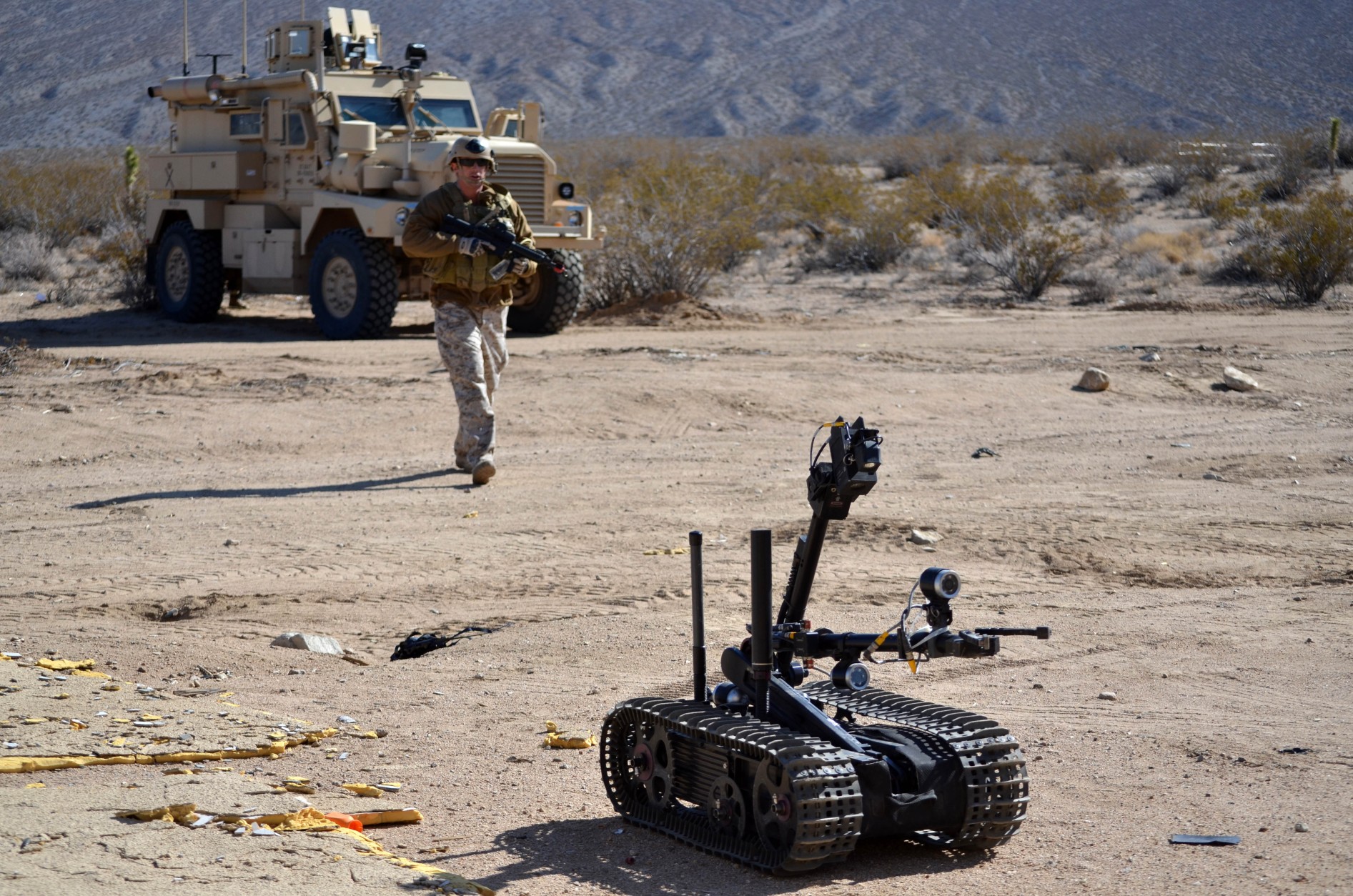In the rapidly evolving landscape of military technology, the integration of autonomous systems raises significant ethical and operational questions. As nations invest in advanced combat technologies, including armed robots and drones, the debate intensifies over the extent of human oversight in lethal decision-making processes. The recent statement from the US Department of Defence emphasizes that human judgment will always be the final arbiter in whether armed robots can fire their weapons. This declaration attempts to quell public fears surrounding the deployment of autonomous systems in warfare, particularly with the introduction of AI-driven targeting systems like Atlas.
Historically, the concept of military robots is not new. For instance, the deployment of “Swords” robots in Iraq as early as 2007 highlighted an ongoing trend of integrating robotic capabilities into military operations. These technologies, which can perform tasks autonomously, have been part of the military's toolkit for decades. The relationship between humans and machines in combat contexts is complex, and understanding this relationship is crucial as we move forward into a future where technology plays an increasingly dominant role in warfare.
The use of autonomous systems in warfare presents both challenges and opportunities. On one hand, they can enhance operational efficiency and reduce risks to human soldiers. On the other hand, the ethical implications of delegating life-and-death decisions to machines must be carefully considered. As various nations develop and deploy these technologies, it is imperative to engage in meaningful discussions about the moral responsibilities that come with using armed robots in combat.
Table of Contents
- Overview of Military Robotics
- History of Military Robots
- The Birth of Cybernetics
- Ethical Issues Surrounding Armed Robots
- The Future of Military Autonomous Systems
Overview of Military Robotics
Military robotics encompasses the design and use of robots in warfare, including unmanned aerial vehicles (UAVs), ground robots, and naval drones. These systems can be remotely controlled or operate autonomously, with the ability to perform various tasks such as reconnaissance, surveillance, and even combat. The integration of robotics into military operations aims to enhance effectiveness while minimizing human risk.
As the technology rapidly advances, the potential applications of military robots continue to expand. From logistics support to direct engagement in combat scenarios, the versatility of these systems is reshaping traditional military strategies. However, with these innovations comes the necessity for stringent regulations and oversight to ensure ethical usage.
History of Military Robots
The journey of military robotics dates back to the Second World War when innovative technologies began to emerge. One significant advancement was the development of the proximity fuse, which allowed artillery shells to explode at predetermined distances, greatly increasing their effectiveness. These early technologies laid the foundation for the sophisticated systems we see today.
In the years that followed, various robotic systems were introduced, including the early drone technology used for reconnaissance and surveillance. The evolution of these systems has led to the creation of more advanced platforms capable of engaging in combat, raising important discussions about the role of humans in decision-making processes on the battlefield.
The Birth of Cybernetics
Cybernetics, a field pioneered by mathematician Norbert Wiener during World War II, explores the interactions between humans and machines. Wiener’s work focused on the feedback loops that allow systems to adapt and improve their performance over time. This foundational theory has influenced the design of modern military robots, allowing them to operate with a degree of autonomy while still relying on human oversight.
The principles of cybernetics extend beyond mere automation; they seek to enhance decision-making processes. As military robots become increasingly sophisticated, understanding the balance between machine autonomy and human judgment remains critical to their effective deployment.
Ethical Issues Surrounding Armed Robots
The introduction of armed robots into military operations raises profound ethical dilemmas. One key concern is the potential for machines to make decisions that result in loss of life without human intervention. This leads to questions about accountability and moral responsibility in warfare. If a robot makes a fatal error, who is accountable: the operator, the manufacturer, or the military command?
Furthermore, the dehumanization of warfare through robotics creates a disconnect between soldiers and their actions. When machines handle lethal decisions, there is a risk of desensitization to the consequences of violence. Addressing these ethical issues is essential to ensure that military robotics are used responsibly and with consideration for human life.
The Future of Military Autonomous Systems
Looking ahead, the future of military robotics holds both promise and challenges. As technology continues to advance, we can expect to see more sophisticated systems capable of autonomous operations. This evolution will necessitate robust frameworks for governance and ethical guidelines to ensure responsible usage.
Ultimately, the integration of armed robots into military strategy will likely remain a topic of heated debate. Balancing the benefits of increased efficiency and reduced risk to personnel with the moral implications of autonomous decision-making will be crucial as we navigate this complex landscape.
```
Harry Styles Shocks Fans With Buzzcut: A Look At His New Style And Personal Life
Dwyane Wade's Journey As A Father: Embracing His Daughter's Identity
Jason Momoa's Future As Aquaman: Insights From DC Studios Co-CEO Peter Safran


